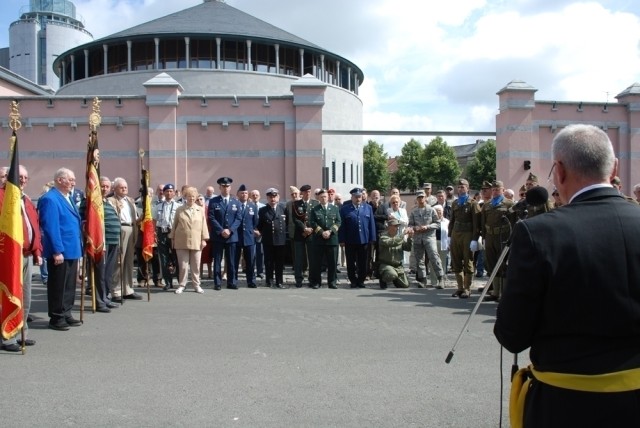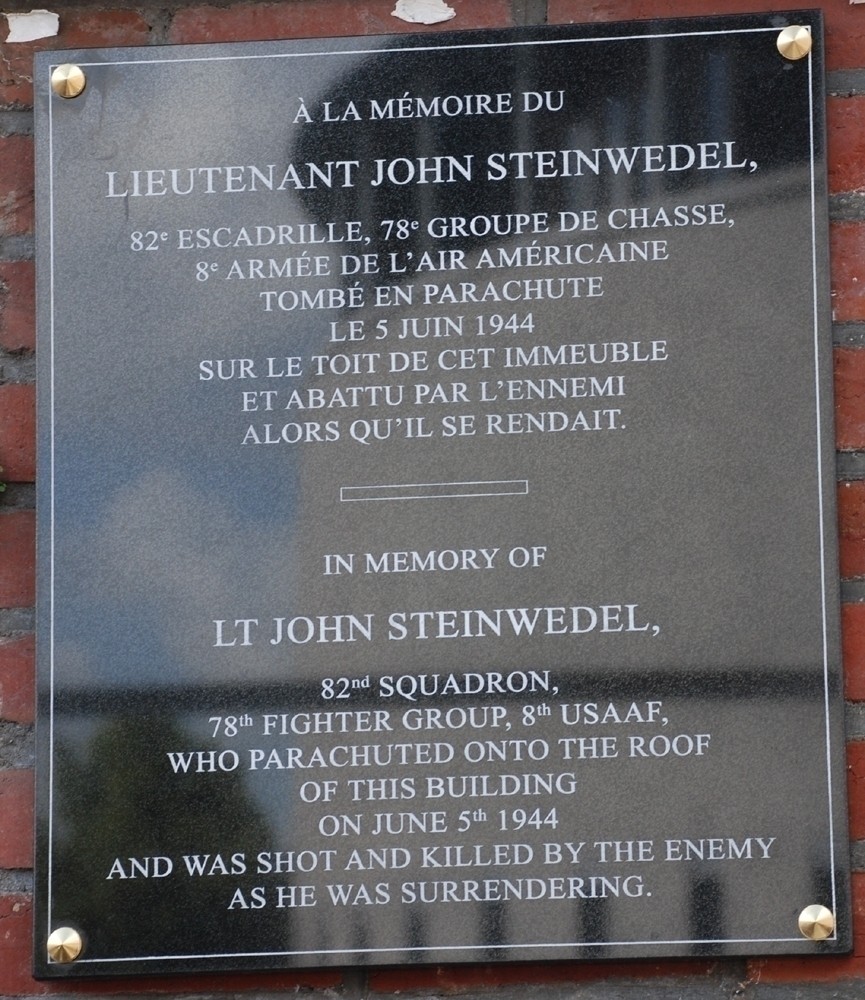CHIAfE+VRES, Belgium - A small plaque honoring an American pilot executed by the Germans in Mons was unveiled June 26 as members of the 309th Airlift Squadron provided a colorguard unit for the ceremony.
The squadron, based at ChiAfA..vres Air Base, participated in an unveiling ceremony in Mons honoring 2nd Lt. John Steinwedel, P-47 D Thunderbolt pilot who was executed 64 years ago by the Nazis.
Steinwedel and his crew of the 82nd Squadron, 78th Fighter Group, were on a bomber escort mission between Cherbourg and Pas de Calais, France on June 5, 1944.
The official U.S. Army Air Force records state that Lt. Steinwedel's plane was getting too heavy due to the weight of ice that formed on the plane's wings as the squadron was climbing over 16,000 feet above the French city of Amiens.
Trying to remedy this problem and decrease its altitude, Steinwedel's P47 left the formation.
It made its way up to Mons but the records don't mention why it was heading that direction. The pilot may have gotten lost while concentrating on keeping control over the plane. e may also have been located by a German fighter or hit by the air defense. Nevertheless, the plane crashed on a house on Boulevard Dolez, downtown Mons while the air crew managed to bail out on time.
Steinwedel landed on top of a roof on the currently called Rue des Droits de l'Homme at Mons. A local resident, witnessed what happened.
His son Pierre Nivarlet, recalls what his father told him: "The pilot fell on the rear side of the roof at No. 8, Rue du MarchAfA au BAfAtail as the street was called at the time. My dad was walking home and noticed some German soldiers running out of a nearby caserne, pointing their weapon and looking in the air. He then saw the parachute coming down and landing on the roof.
"The aviator managed to get to the chimney and holding himself with one hand he made a sign of surrender with the other. While some 20 German soldiers and a couple of civilians were watching, one of the soldiers shot him down. Steinwedel fell some 10 meters down at the rear of the house at No. 6.
"He was carried away by the Germans and died at the German military hospital located at Jemappes."
Gustav Karl Reuster, the German soldier who shot Lt. Steinwedel, was sentenced to death and hanged on July 16, 1947.
Steinwedel will now be remembered by all who walk by No. 6, Rue des Droits de l'Homme in Mons as a plaque on the front of the house recalls the events that happened on the very spot 64 years ago.






Social Sharing